Czech humor is hard to describe in a few words without resorting to generalizations, but the local wit shares much in common with British humor – think Monty Python -- in that it’s dry, dark and drawn to absurdity. There’s rarely any room for pathos, hypocrisy or overt sentimentality.
It’s no coincidence that old British TV series, such as "'Monty Python’s Flying Circus," remain wildly popular with local audiences. Sir Michael Palin, one of the members of the original Monty Python troupe, even once famously repaid the compliment, remarking that Czechia, among nations, may have the world’s greatest sense of humor. Speaking to British television in 2019, shortly after being knighted for service to culture, Palin said Czechs simply "have a feeling that everything is up for laughter." He said many countries have a "laughter ceiling," meaning that some sensitive subjects remain off-limits. "But not in the Czech Republic."
This local appreciation of the absurd was on full display a few years ago in a TV poll where Czechs were asked to name the "greatest" Czech person who’d ever lived. Instead of selecting one of several deserving figures, such as Emperor Charles IV, Jan Hus, Tomáš Masaryk or Václav Havel, viewers instead overwhelmingly went with a fictional, comical polymath named Jára Cimrman, who had been created out of whole cloth in the 1960s for a popular radio comedy. Carrying the farce a step further, Cimrman was later disqualified for the honor, because he had never actually "lived."
Lampooning the empire
It's not clear when and how Czechs developed this penchant for irreverence. Certainly, early Czech historical figures like Charles IV or the ever-stern Jan Hus weren’t exactly famous for their great senses of humor. Czech wit really came into form during the late-19th and early-20th centuries, when the emerging Czech nation found itself trapped within an aging Austro-Hungarian Empire. The Habsburg monarchy, already at that time seen as a holdover from the Middle Ages, was rife with the kind of empty symbolism, hypocrisy and stale tradition that was ripe for lampooning.
In his 1921 comic classic, "The Good Soldier Švejk," Czech author Jaroslav Hašek took full aim at the absurdities of life under the empire with his epic tale of a Czech “Forrest Gump” figure who manages to ride out the horrors of World War I through sheer stupidity (or perhaps intelligence masquerading as stupidity?). While not many Czechs identify with Švejk, the novel’s central character, they certainly recognize the dire (and ludicrous) situation the nation found itself in during that war, when Czechs were called on to defend with their lives an archaic empire built largely on bombast. Hašek was saying that idiocy was the only rational response to the situation.
Right from the book’s first sentence, readers know they’re in for a comic ride. It begins with an immortal line spoken by Švejk’s charwoman, Mrs Muller. She remarks: "And so they've killed our Ferdinand." Here, she’s referring to the tragic assassination in Sarajevo in 1914 of the Austrian Archduke Franz Ferdinand and his wife that sparked the start of World War I and would drag the Czechs into war. Švejk responds with his characteristic cluelessness: "Which Ferdinand, Mrs Muller? I know of two. One is a messenger at Prusa's, the chemist's, who once drank a bottle of hair oil there by mistake. And the other is Ferdinand Kokoška, who collects dog manure. Neither of them is any loss."
Dark humor as medicine
Dark humor was a necessary and healthy reaction to the difficult years of the Nazi occupation during World War II and of Soviet-imposed communism after the war. In the early years of communism, during the 1950s, most of the jokes aimed at the system were forced underground and shared only between close friends and family members.
In one of his early books, titled fittingly "The Joke," Czech author Milan Kundera writes of what could happen when a private joke went public. In the book, the main character, a young guy named Ludvik, feels rejected by his girlfriend, a devoted communist. In a fit of pique, he sends her a postcard emblazoned with a tongue-in-cheek reference to Marx and, in the process, ends up changing his life forever. Echoing Marx’s famous line that "Religion is the opiate of the people!" Ludvik writes jokingly that: "Optimism is the opiate of mankind! A healthy spirit stinks of stupidity! Long live Trotsky!" Things proceed poorly from there.
A brief political thaw and easing of censorship in the mid-1960s allowed, once again, for a fuller, public display of Czech humor. Film directors from the period, like Miloš Forman and Jiří Menzel, skillfully tiptoed around existing restrictions and crafted masterpieces like "The Fireman’s Ball" (Hoří, má panenko), "Loves of a Blonde" (Lásky jedné plavovlásky) and "Closely Watched Trains" (Ostře sledované vlaky), which went on to win prizes around the world.
These films drew on classic, bawdy elements of Czech humor, the slapstick and appreciation of the absurd, while also telling stories that moved the heart and gently took the ruling communists to task. Forman’s Loves of a Blonde, for example, takes place in a bleak factory town where lonely women work dull, endless shifts as shoemakers. The factory director decides to try to improve morale by inviting over a group of reserve soldiers from a nearby base for a big party. Things, of course, don’t go according to plan. The soldiers are older than expected and many of them are married. In a classic comic scene from the film, one of the soldiers is so eager to rip off his wedding ring, that he pulls a bit too hard. The ring then rolls all the way across the dance floor and up to the shoes of one of the young women waiting to dance.
Czechs’ innate sense of comic creativity helped them immeasurably to cope with their darkest moment in modern history: the Soviet-led Warsaw Pact invasion of August 1968. The Kremlin had ordered tanks and troops over the border to put down a series of political and economic reforms that the Russians deemed too liberal. With the Czechoslovak Army confined to barracks, the general population did what they could to thwart the invaders. They painted over street signs and changed road-markers in order to confuse the Soviet tank drivers.
The period of "normalization" that followed the invasion put an end to the manic creativity of the 1960s, but elements of classic Czech humor thrived in the 1970s and ‘80s and films from this period remain popular today. While directly criticizing the Soviet Union was off-limits, film directors instead poked fun at social conventions of life in Czechoslovakia. One classic from the period, "Run, Waiter, Run!" (Vrchní, prchni!), starring the comedic icons Josef Abrhám and Zdeněk Svěrák, follows a frustrated bookstore manager (Abrhám) who concocts a crazy scheme to earn money by masquerading as a pay waiter and pocketing people’s tabs in restaurants. Needless to say the deception lands him in hot water -- most famously in a scene where Svěrák’s character recognises him on the street and Abrhám comically modifies his voice to evade detection. The conceit is so ridiculous (a fundamental element of local humor that endures to this day), it’s laugh-out-loud funny.
Wit and wisdom of David Černý
Something of this signature Czech cheekiness – sharpened to make larger political or cultural points -- can be seen around Prague today in the various installations of local artist David Černý. Černý gained fame in the months after the 1989 Velvet Revolution for painting over a sombre Soviet WWII war memorial in Prague – an old Russian tank – in a shocking shade of pink. With this thin coating of paint, Černý covered over generations of Soviet-era myth-making and machismo surrounding the war. Some people, naturally, complained the act was irreverent and sought to punish the artist, but most people simply, instinctively, laughed it off. The tank was suddenly transformed into a monument to Soviet hypocrisy.
Highlighting the absurdities of life under communism was a common early theme of Černý’s, such as with his big bronze sculpture, "Quo Vadis," which stands today in the garden of the German embassy in Malá Strana (sadly off limits to the general public). The work depicts an old East German car, a Trabant, standing on four legs and recalls the dramatic days of late-1989, when thousands of East Germans fled in their cars to Prague on their way to new lives in West Germany. Here, the artist mocks the old regime and calls out the obvious irony of people bolting communism in their own decrepit, communist-made vehicles.
Černý can be just as tough on Czech heroes and Czech history as on the country’s former overlords. One of his most beloved works, "Horse" (Kůň), hangs for all to see from a ceiling in the Lucerna shopping passage, just off Wenceslas Square. In this work, he’s placed one of the country’s patron saints, St Wenceslas, ludicrously seated astride an obviously dead horse (complete with tongue hanging out). Černý pokes fun both at Czech history generally and the pomposity of Josef Václav Myslbek’s grand statue of the same saint just a few meters away at the top of the square.

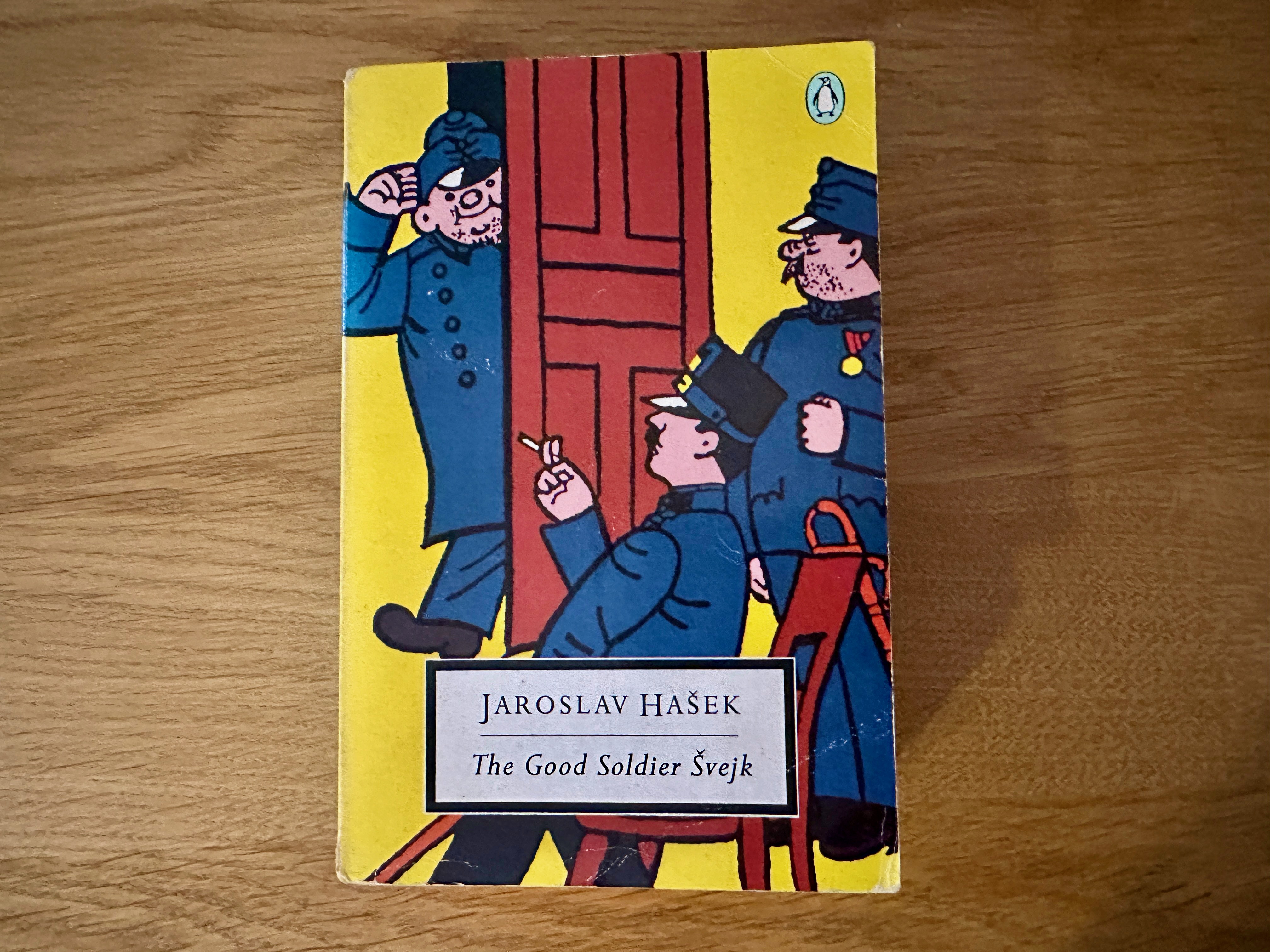
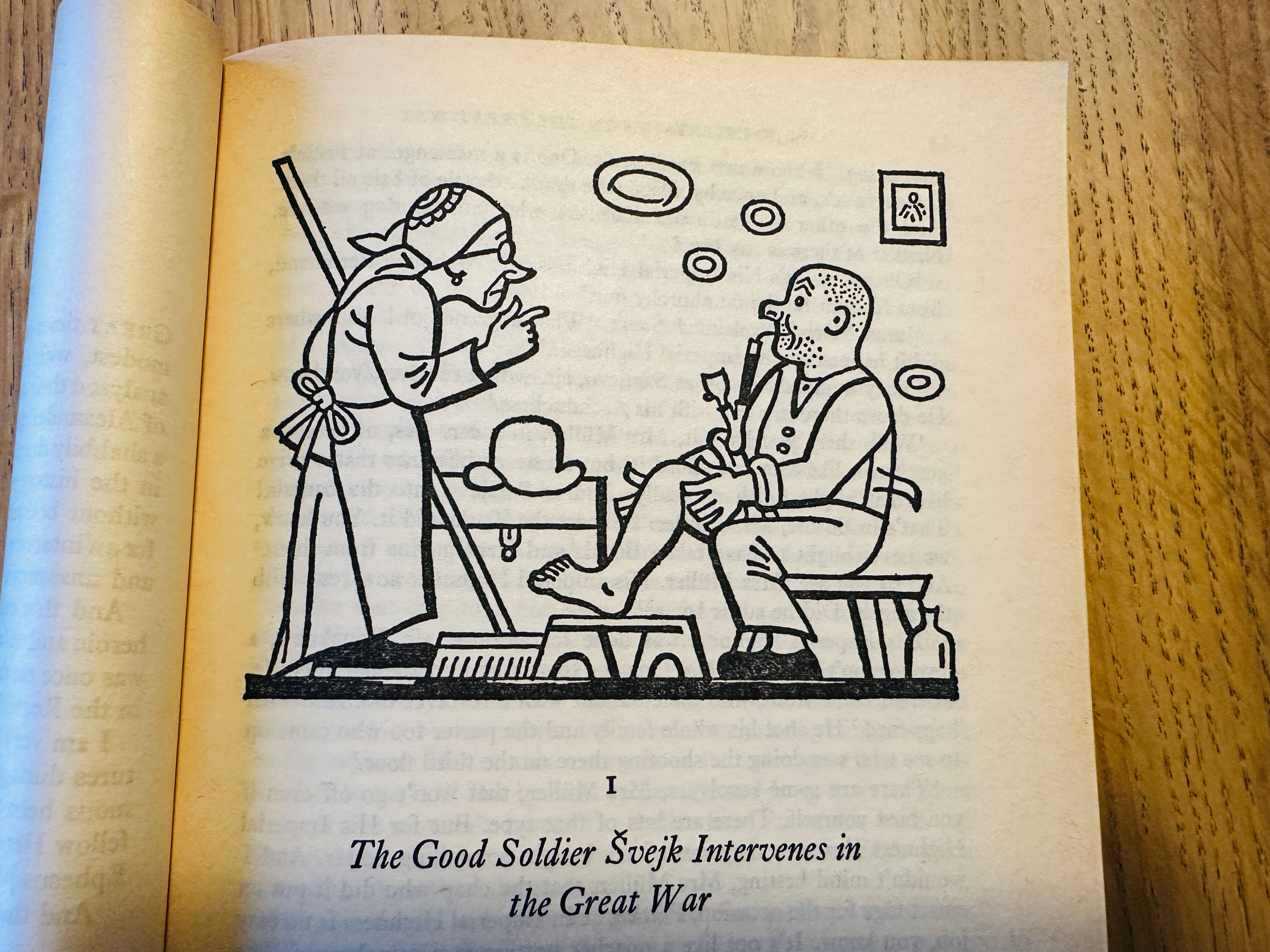
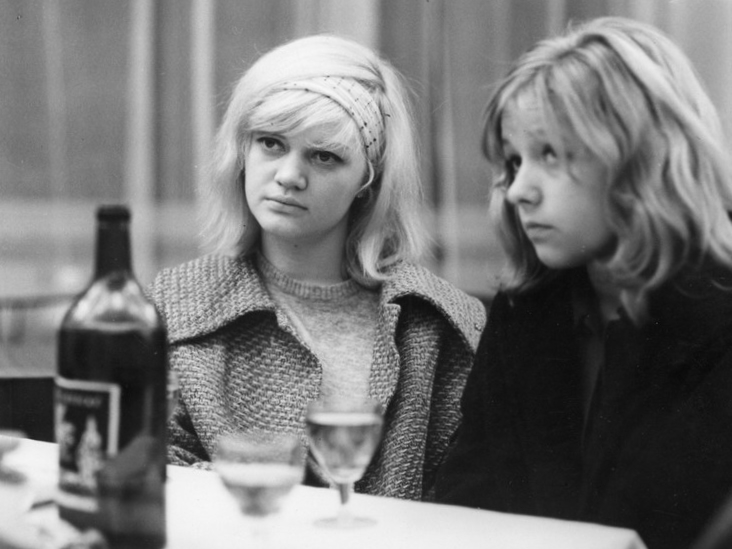
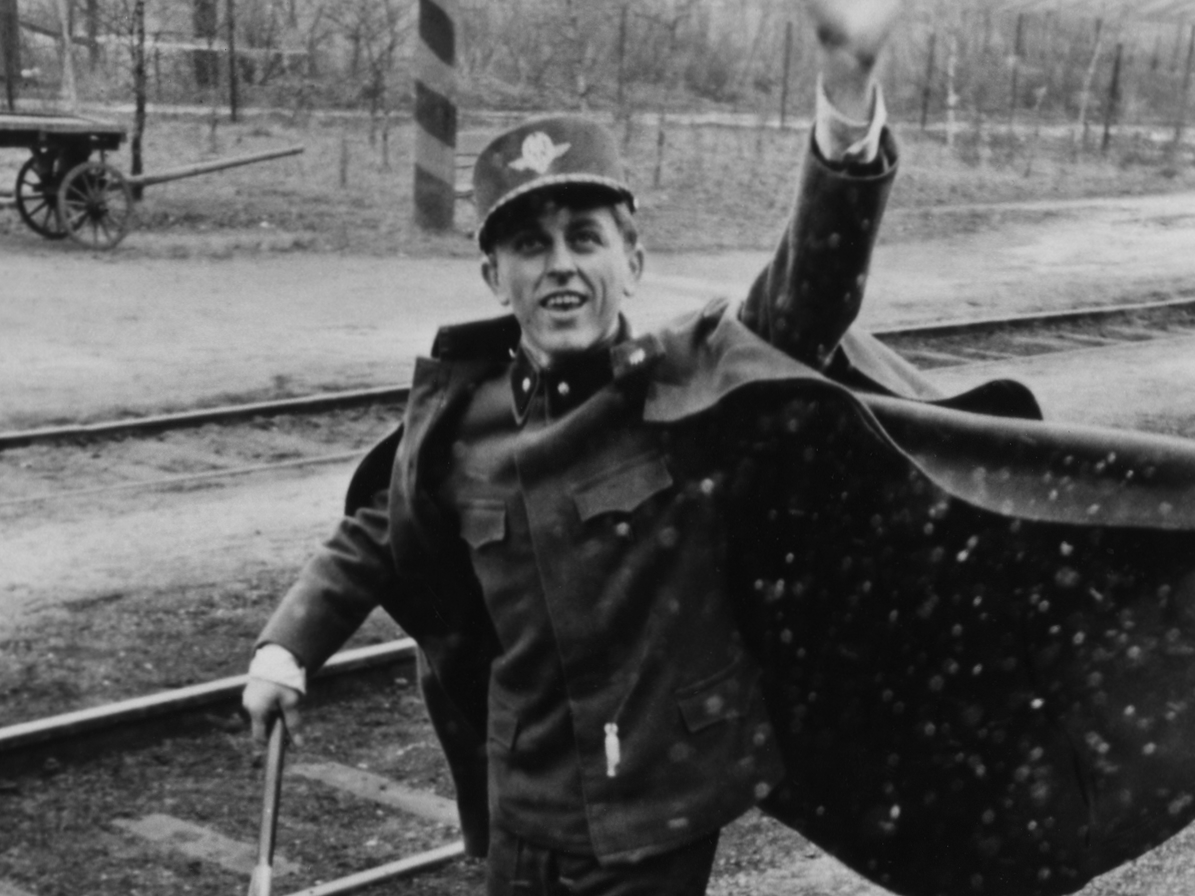
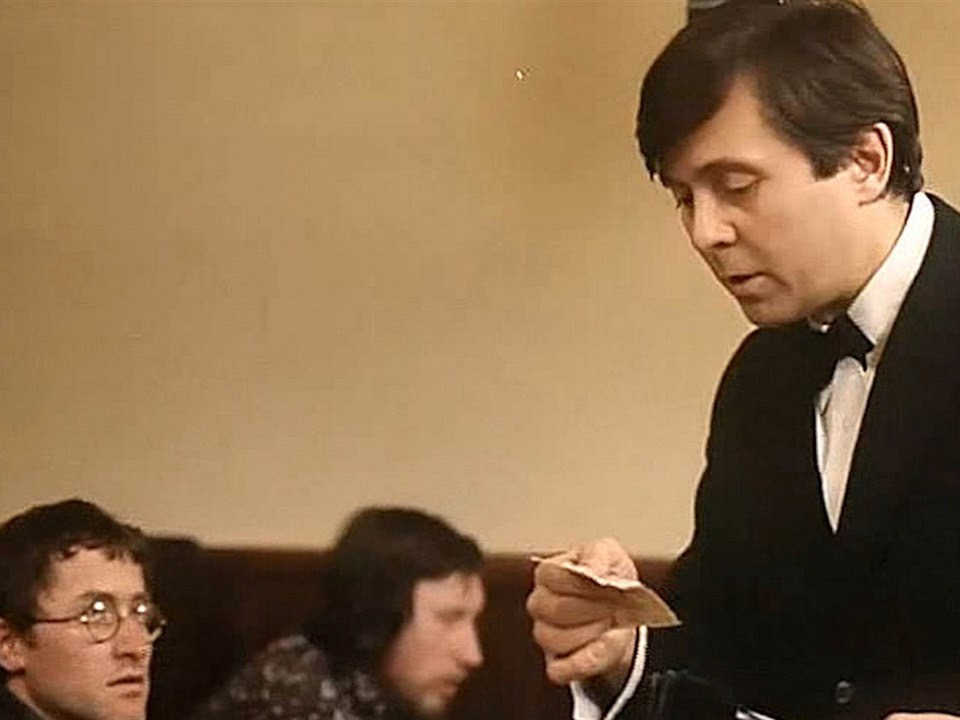
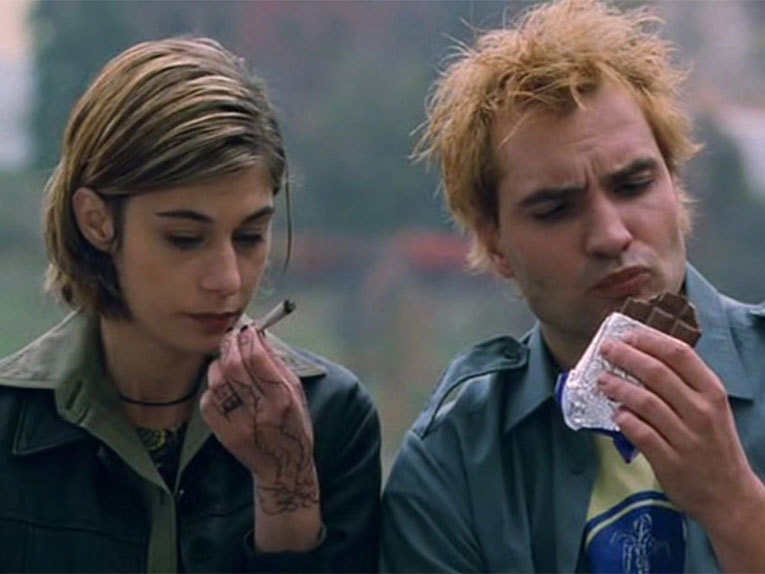
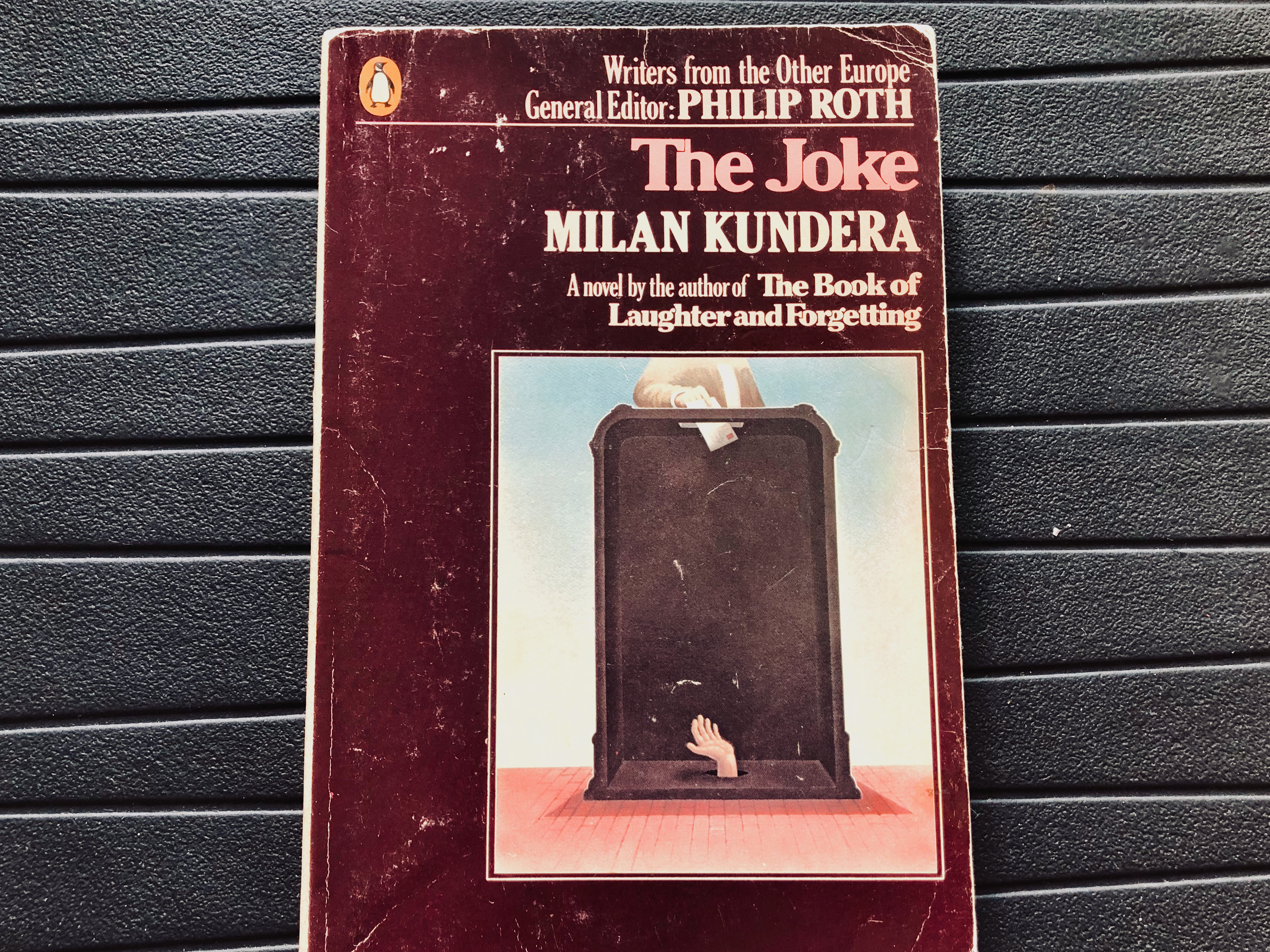
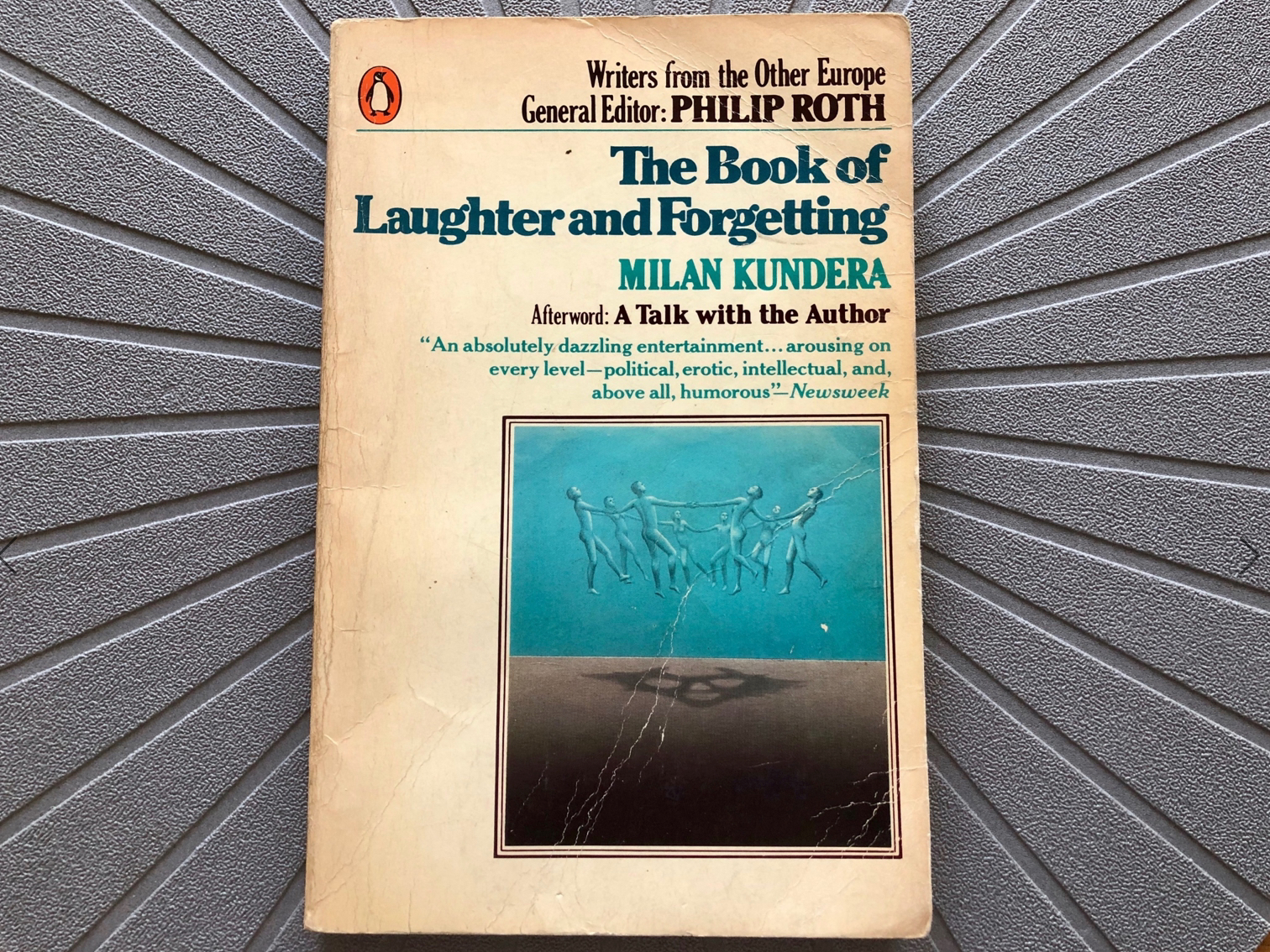
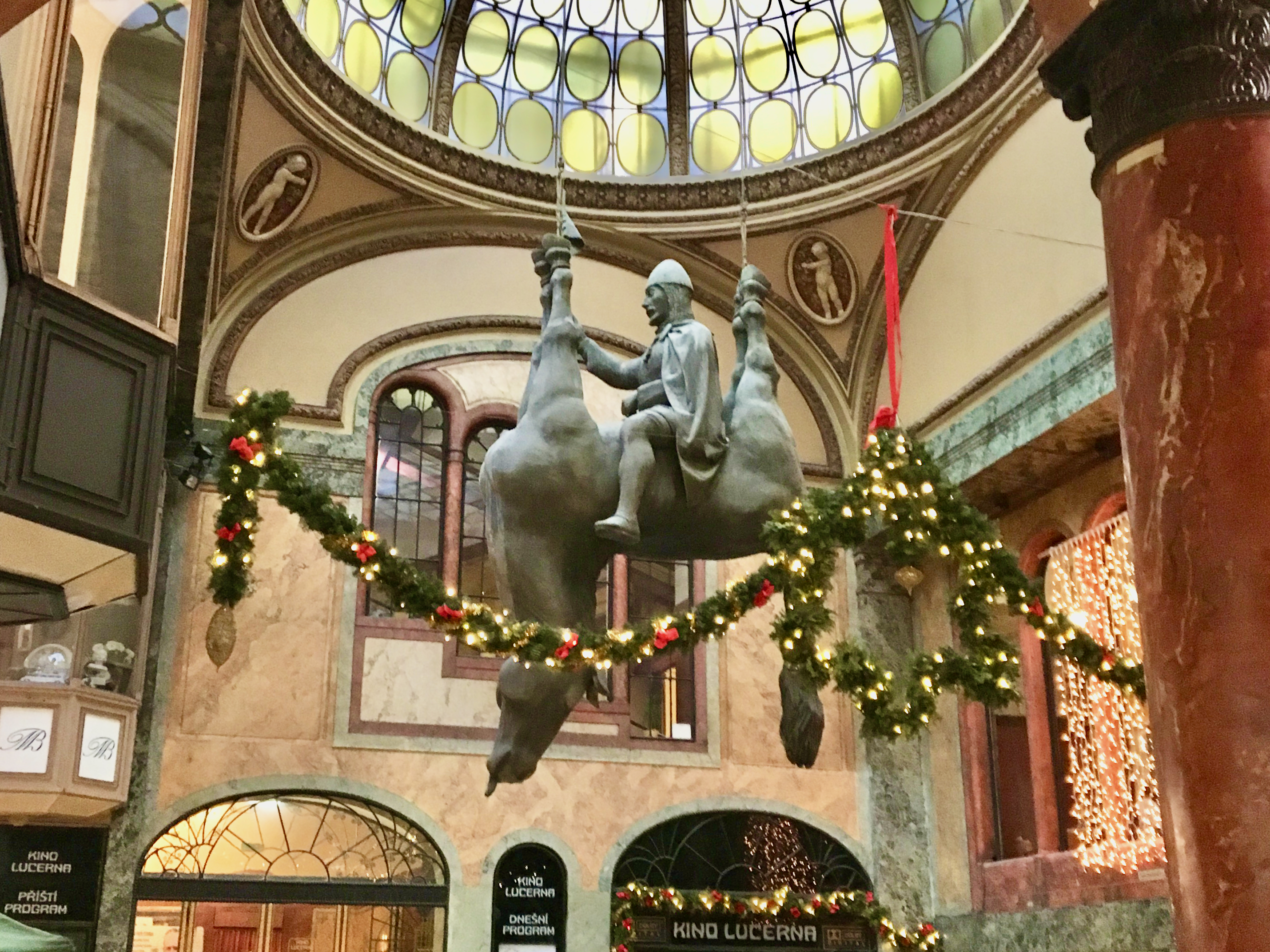
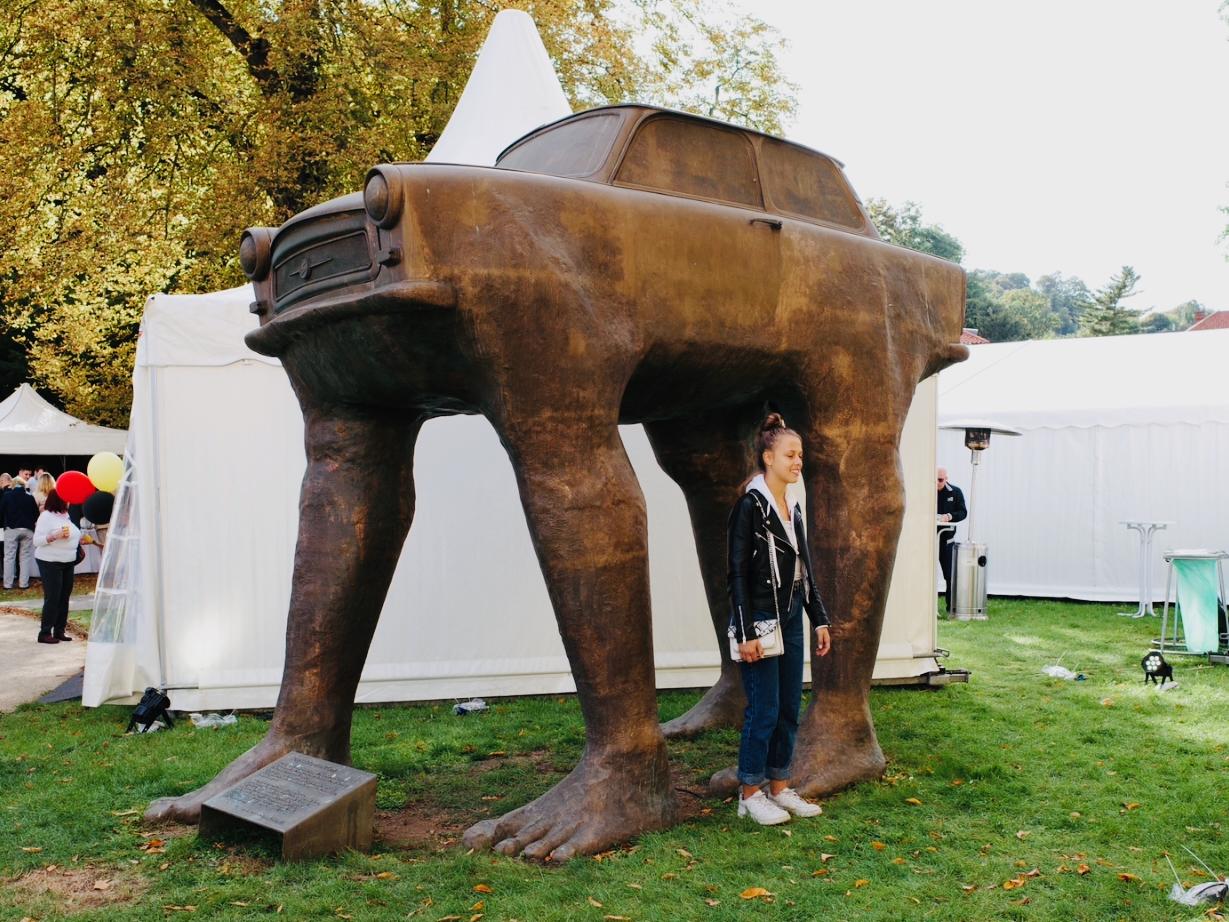

Mark, this is a great analysis. We do love to laugh at the absurd. But that humor does come tinged with certain sadness, if not sentimentality. Take Hrabal’s King of England, Havel’s Audience, or even Svejk. Many Czechs can quote from first two Svejk books. They are funny, although some of the jokes can verge on being crude. (I think that’s what turns off some readers.) But books Three and Four get pretty dark—and the novel wasn’t finished. Rereading it recently after living in the U.S., it struck me as a Czech “Vietnam” novel.
Hi Tomas, Thank you so much for reading and leaving a comment. You’ve dug much deeper into the Svejk oevre than I ever could 🙂